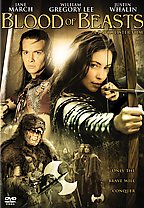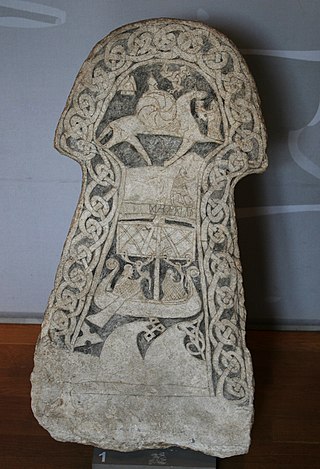
In Norse mythology, a valkyrie is one of a host of female figures who guide souls of the dead to the god Odin's hall Valhalla. There, the deceased warriors become einherjar. When the einherjar are not preparing for the events of Ragnarök, the valkyries bear them mead. Valkyries also appear as lovers of heroes and other mortals, where they are sometimes described as the daughters of royalty, sometimes accompanied by ravens and sometimes connected to swans or horses.

"Beauty and the Beast" is a fairy tale written by French novelist Gabrielle-Suzanne Barbot de Villeneuve and published in 1740 in La Jeune Américaine et les contes marins. Her lengthy version was abridged, rewritten, and published by French novelist Jeanne-Marie Leprince de Beaumont in 1756 in Magasin des enfants to produce the version most commonly retold. Later, Andrew Lang retold the story in Blue Fairy Book, a part of the Fairy Book series, in 1889. The fairy tale was influenced by the story of Petrus Gonsalvus as well as Ancient Greek stories such as "Cupid and Psyche" from The Golden Ass, written by Lucius Apuleius Madaurensis in the second century AD, and "The Pig King", an Italian fairytale published by Giovanni Francesco Straparola in The Facetious Nights of Straparola around 1550.

Erik the Viking is a 1989 British comedy-fantasy film written and directed by Terry Jones. The film was inspired by Jones's children's book The Saga of Erik the Viking (1983), but the plot is completely different. Jones also appears in the film as King Arnulf.

Ynglinga saga is a Kings' saga, originally written in Old Norse by the Icelandic poet and historian Snorri Sturluson about 1225. It is the first section of his Heimskringla. It was first translated into English and published in 1844 by Samuel Laing.
Berserker, also known as Berserker: Hell's Warrior, is a fantasy-action-horror film based on Norse mythology. It was written, directed and produced by Paul Matthews and had its main release in 2004.
Eysteinn Beli or Eysteinn hinn illráði, Swedish: Östen Illråde (ill-ruler) or Östen Beli, was a semi-legendary king of Sweden who would have ruled in the late 8th century.
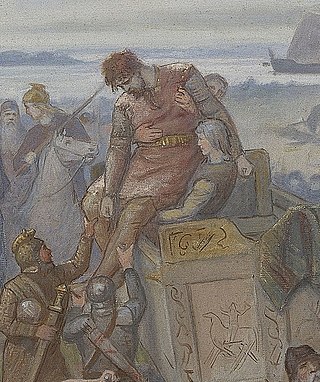
Styrbjörn the Strong according to late Norse sagas was a son of the Swedish king Olof, and a nephew of Olof's co-ruler and successor Eric the Victorious, who defeated and killed Styrbjörn at the Battle of Fyrisvellir. As with many figures in the sagas, doubts have been cast on his existence, but he is mentioned in a roughly contemporaneous skaldic poem about the battle. According to legend, his original name was Björn, and Styr-, which was added when he had grown up, was an epithet meaning that he was restless, controversially forceful and violent.

Sigurd Snake-in-the-eye or Sigurd Áslaugsson was a semi-legendary Viking warrior and Danish king active from the mid to late 9th century. According to multiple saga sources and Scandinavian histories from the 12th century and later, he is one of the sons of the legendary Viking Ragnar Lodbrok and Áslaug. His historical prototype might have been the Danish King Sigfred who ruled briefly in the 870s. Norwegian kings' genealogies of the Middle Ages name him as an ancestor of Harald Fairhair and used his mother's supposed ancestry the Völsung to create an ancestry between Harald and his descendants and Odin.
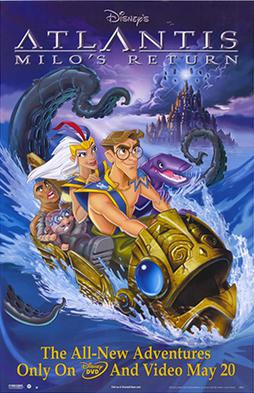
Atlantis: Milo's Return is a 2003 American animated science fiction film directed by Victor Cook, Toby Shelton, and Tad Stones. It is the sequel to Atlantis: The Lost Empire (2001). The film received a direct-to-video release on May 20, 2003.

Egil Skallagrímsson was a Viking Age war poet, sorcerer, berserker, and farmer. He is known mainly as the anti-hero of Egil's Saga. Egil's Saga historically narrates a period from approximately 850 to 1000 AD and is believed to have been written between 1220 and 1240 AD.
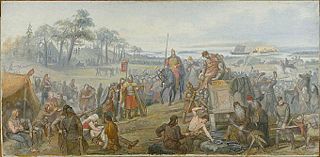
The Battle of Fýrisvellir was fought in the 980s on the plain called Fýrisvellir, where modern Uppsala is situated, between King Eric the Victorious and an invading force. According to Norse sagas, this force was led by his nephew Styrbjörn the Strong. Eric won the battle, and became known as "the Victorious".
The Norse mythology, preserved ancient Icelandic texts such as the Poetic Edda, the Prose Edda, and other lays and sagas, was little known outside Scandinavia until the 19th century. With the widespread publication of Norse myths and legends at this time, references to the Norse gods and heroes spread into European literary culture, especially in Scandinavia, Germany, and Britain. In the later 20th century, references to Norse mythology became common in science fiction and fantasy literature, role-playing games, and eventually other cultural products such as Japanese animation. Storytelling was an important aspect of Norse mythology and centuries later, with the rediscovery of the myth, Norse mythology once again relies on the impacts of storytelling to spread its agenda.

Valkyrie Profile is a role-playing video game developed by tri-Ace and published by Enix for the PlayStation. It was released on December 22, 1999 in Japan and on August 29, 2000 in North America. Inspired by Norse mythology, Valkyrie Profile follows the titular valkyrie, Lenneth, as she travels through Midgard, collecting the souls of slain heroes to serve either as einherjar or her personal companions for Ragnarok - the battle to decide the fate of all creation - and trains them by fighting monsters and performing additional quests. As she journeys, she learns more about her original human life, removed from her memory upon becoming a Valkyrie.
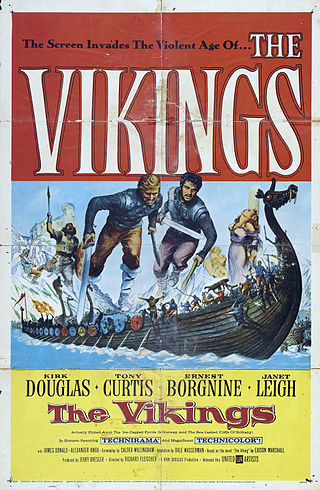
The Vikings is a 1958 American epic historical fiction swashbuckling film directed by Richard Fleischer, filmed in Technirama, and printed in Technicolor. It was produced by Jerry Bresler and Kirk Douglas, through Douglas' Brynaprod company. It is based on the 1951 novel The Viking by Edison Marshall, which in turn is based on material from the sagas of Ragnar Lodbrok and his sons. Other starring roles were taken by then husband-and-wife Tony Curtis and Janet Leigh as well as Ernest Borgnine. The film made notable use of natural locations in Norway. It was mostly filmed in Maurangerfjorden and Maurangsnes, captured on film by cinematographer Jack Cardiff, although Aella's castle was the real Fort-la-Latte in north-east Brittany in France.

The Tale of Ragnar's sons is an Old Norse story about Ragnar Lodbrok and his sons.
The Viking Prince is a fictional Viking hero appearing in comic books published by DC Comics. The character first appeared in The Brave and the Bold #1, and was created by Robert Kanigher and drawn by Joe Kubert. He was one of three historical fiction characters to premiere in the first issue.

The Legend of Sigurd and Gudrún is a book containing two narrative poems and related texts composed by English writer J. R. R. Tolkien. It was published by Houghton Mifflin Harcourt and HarperCollins on 5 May 2009.

The characters of the God of War video game franchise belong to a fictional universe based on Greek mythology and Norse mythology. As such, the series features a range of traditional figures, including those from Greek mythology, such as the Olympian Gods, Titans, and Greek heroes, and those from Norse mythology, including the Æsir and Vanir gods and other beings. A number of original characters have also been created to supplement storylines.
